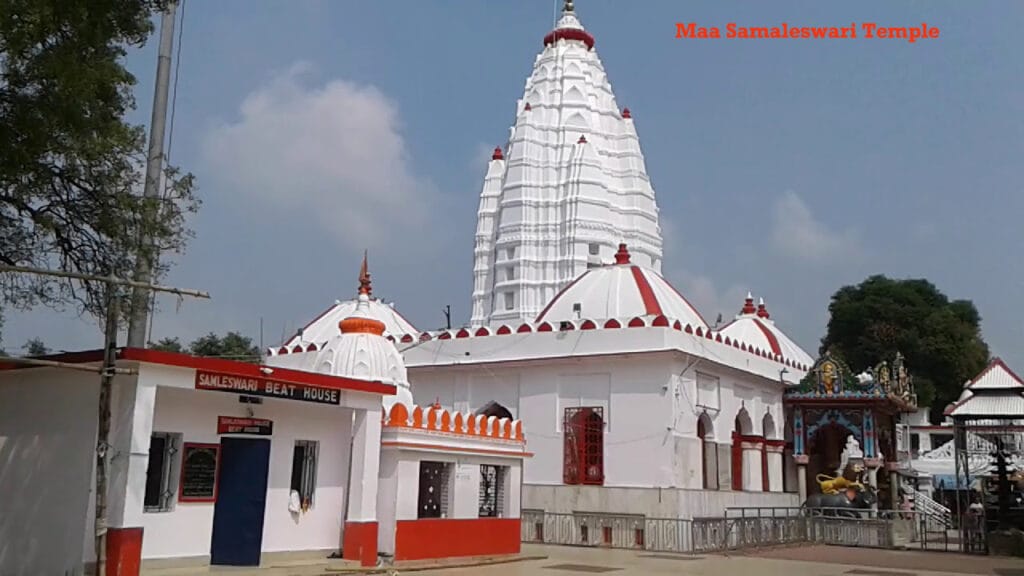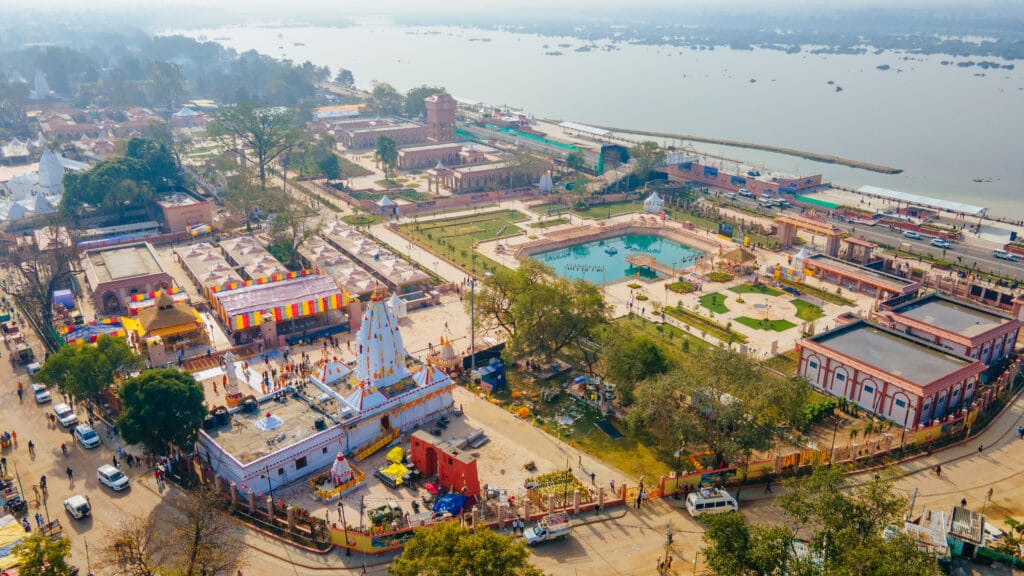
MAA SAMALESWARI TEMPLE
A Spiritual Gem of Sambalpur
Maa Samaleswari Temple Located in the heart of Sambalpur, Odisha, the Maa Samaleswari Temple is one of the most revered pilgrimage sites in western Odisha, dedicated to Goddess Samaleswari, a form of Shakti. The temple is situated on the banks of the Mahanadi River, offering a serene and sacred atmosphere. It is not only a place of religious significance but also a historical and cultural landmark for the region.
History and Significance:
The history of Maa Samaleswari Temple dates back to ancient times, with many legends surrounding the goddess’s origin. According to local folklore, Goddess Samaleswari is believed to have been an incarnation of Goddess Durga, who was invited by the rulers of Sambalpur to protect the land and its people. The temple is believed to have been established in the 16th century, although its significance and reverence have deep roots in local tribal traditions and customs. Over centuries, it has evolved as a symbol of divine protection and fertility for the people of Sambalpur.
The temple holds immense cultural importance and is an integral part of local festivals like Maa Samaleswari Mela, held annually, drawing thousands of devotees and visitors to the site.
Location and How to Reach:
The Maa Samaleswari Temple is located in Sambalpur, a city in the western part of Odisha. The temple is easily accessible from the city center and is located about 2 km from the Sambalpur Railway Station.
By Train: The Sambalpur Railway Station is well-connected to major cities in Odisha and India. From the station, you can hire a taxi or take an auto-rickshaw to the temple.
By Road: Sambalpur is well-connected by road to nearby cities like Rourkela, Jharsuguda, and Bhubaneswar. You can hire a taxi or travel by bus to reach the temple.
By Air: The nearest airport is Jharsuguda Airport (around 55 km away), which connects to major cities like Bhubaneswar and Kolkata.


Architecture of the Temple
The Samaleswari Temple showcases traditional Kalinga-style architecture, featuring intricate carvings and sculptures. The temple has a distinctive rectangular structure, with a central sanctum housing the deity of Maa Samaleswari in the form of a stone idol. The temple is characterized by a beautifully sculpted Shikhara (tower) and a Jagamohan (assembly hall) with elaborately decorated pillars and stone carvings. The interior is adorned with images and icons of other deities, highlighting the temple’s connection to the broader Shakti tradition.
The temple complex is surrounded by lush greenery, and the view of the Mahanadi River adds a sense of tranquility and reverence to the environment. The atmosphere is peaceful, with devotees often seen meditating or performing rituals by the river.
Worship Style and Rituals
The worship style at Maa Samaleswari Temple follows traditional Shakta rituals, which are dedicated to the worship of the Divine Feminine, or Shakti. The daily rituals include morning and evening aartis, offerings of flowers, fruits, and sweets, along with the chanting of mantras and hymns dedicated to the goddess. The temple is also known for its special prayers during important festivals like Durga Puja and Maa Samaleswari Mela.
Devotees come to seek blessings for prosperity, protection, and well-being. The temple is also a place for spiritual reflection, where people offer prayers of gratitude, request blessings for family welfare, and perform vows.
The annual fair at the temple, especially during the Maa Samaleswari Mela, is a grand celebration of the goddess’s power, attracting thousands of pilgrims, dancers, and musicians who participate in various cultural activities and processions.
Conclusion
Maa Samaleswari Temple is a must-visit destination for those seeking spiritual solace and a glimpse into Odisha’s rich cultural and religious heritage. The temple’s history, serene location, stunning architecture, and the powerful worship rituals make it a significant part of Sambalpur’s spiritual landscape. Whether you’re a devotee or a tourist, a visit to this sacred temple promises a fulfilling and enriching experience.